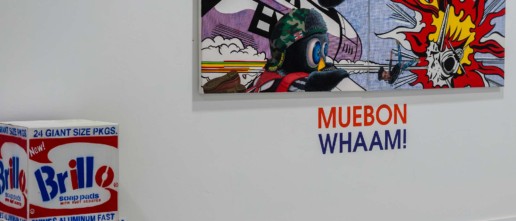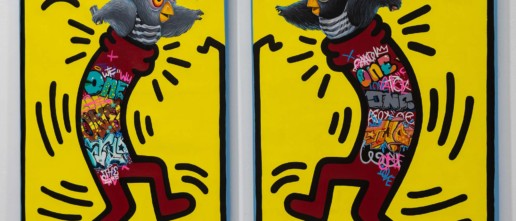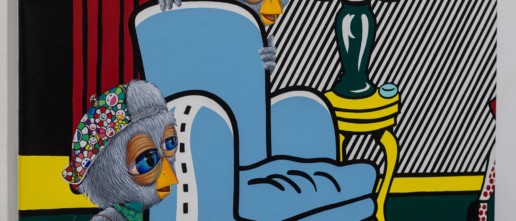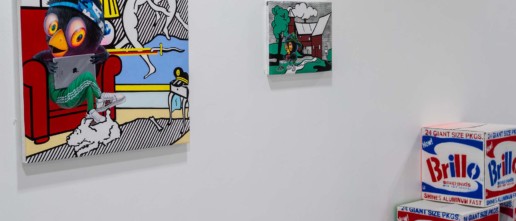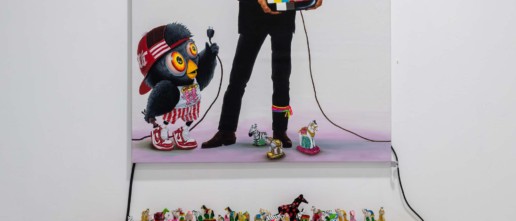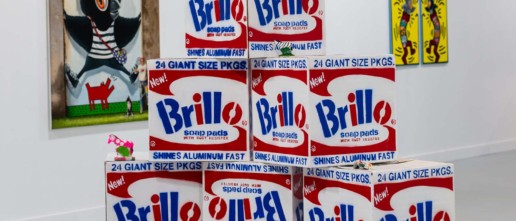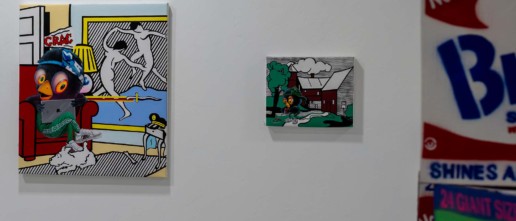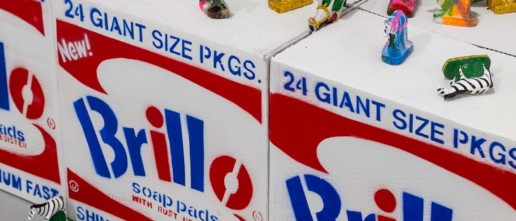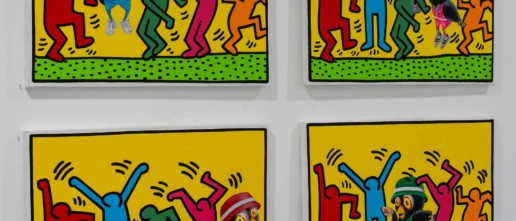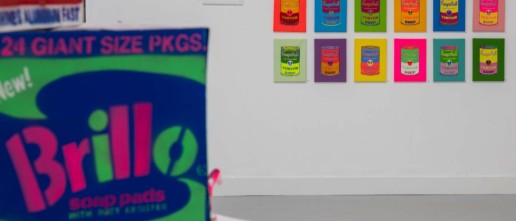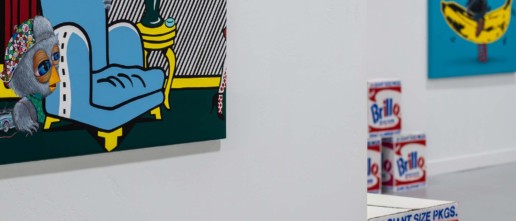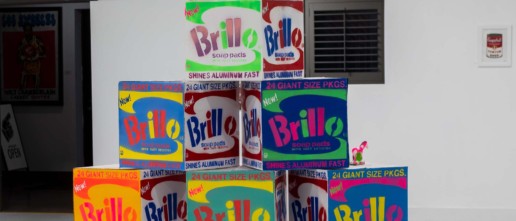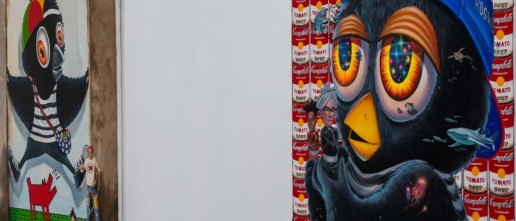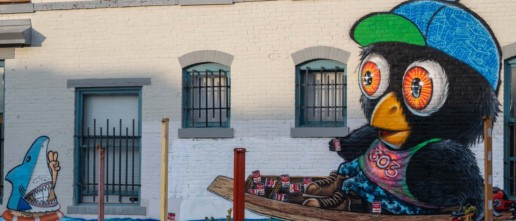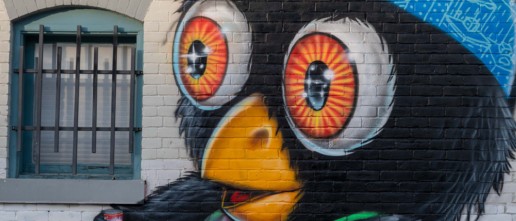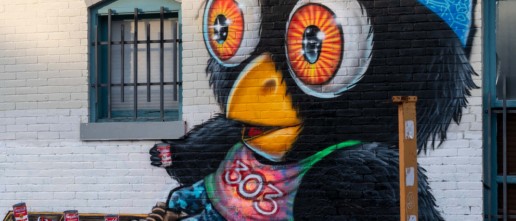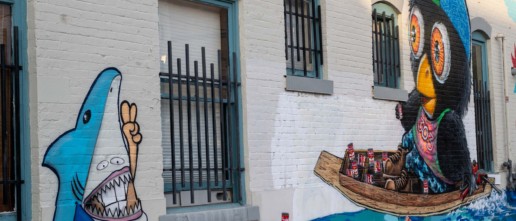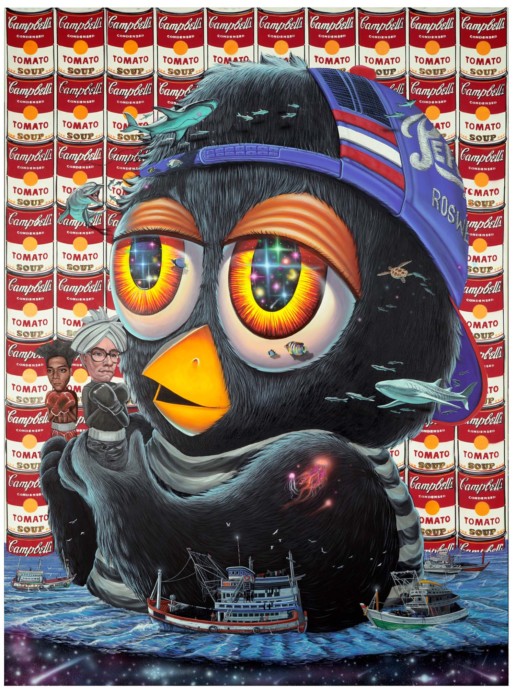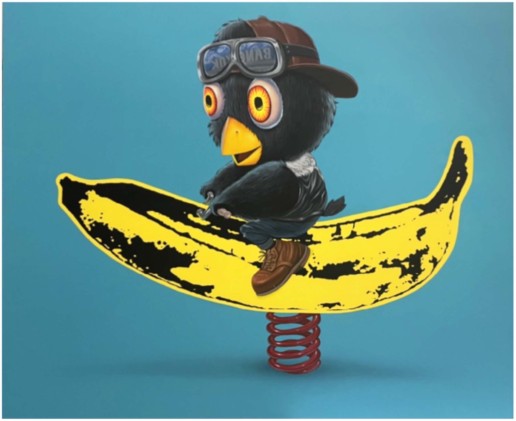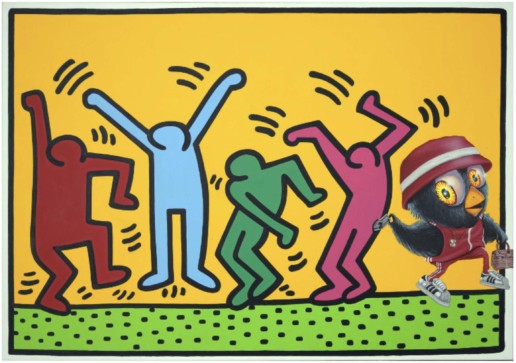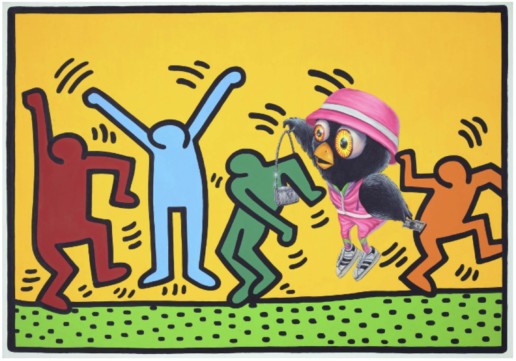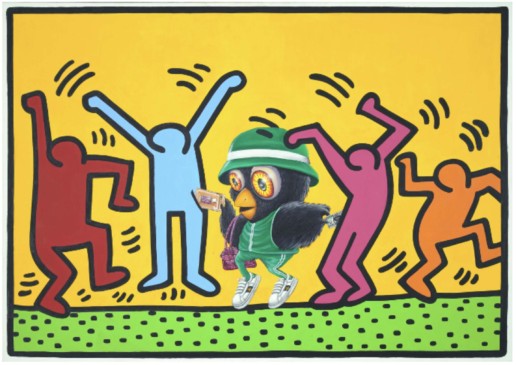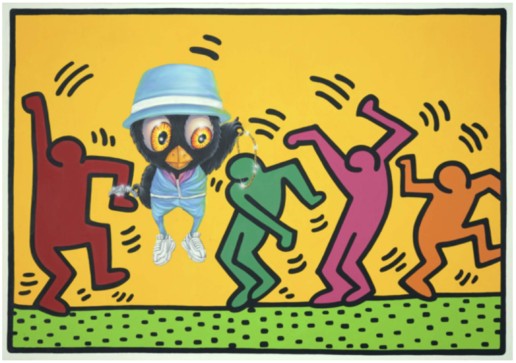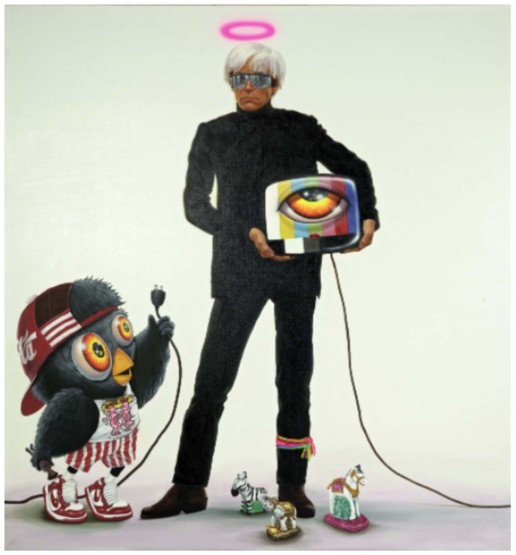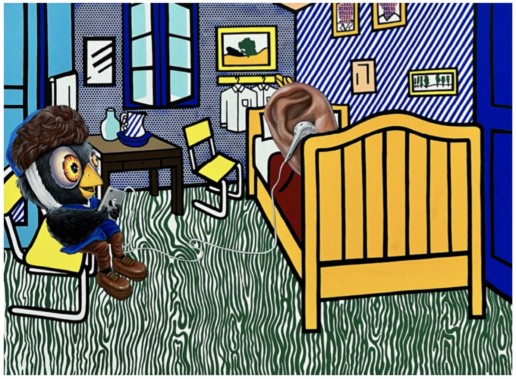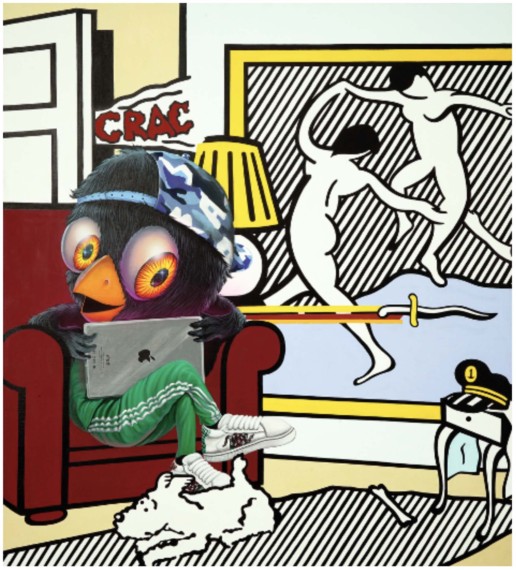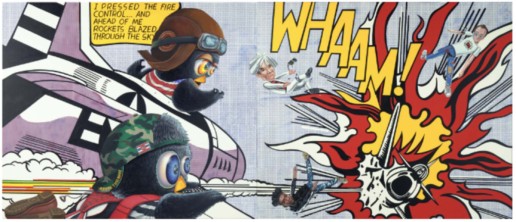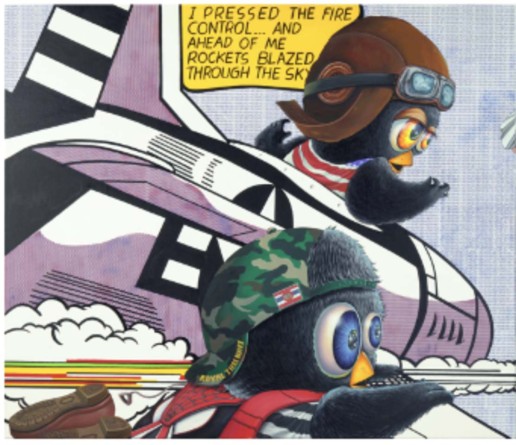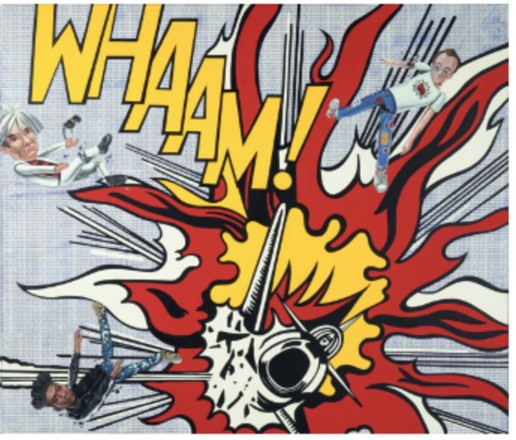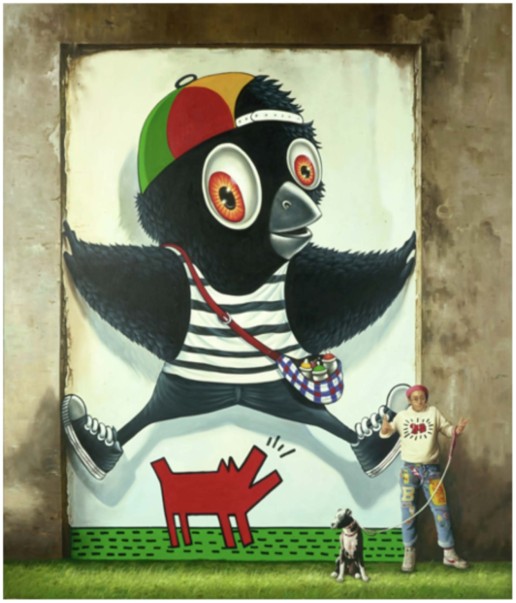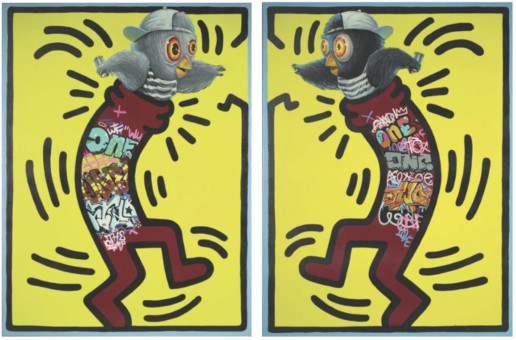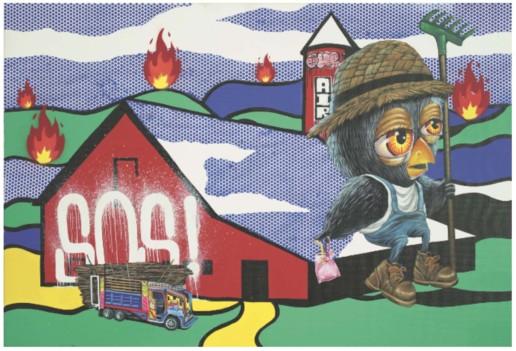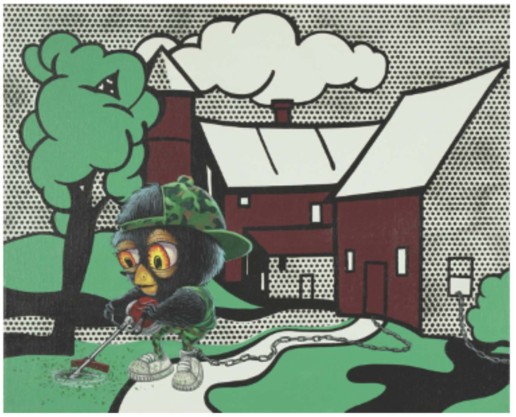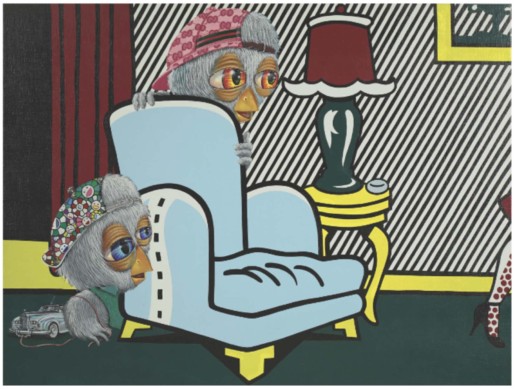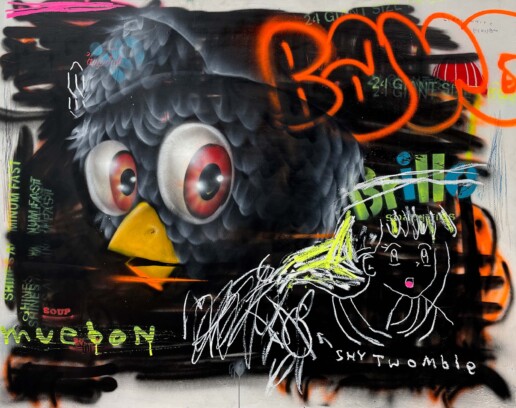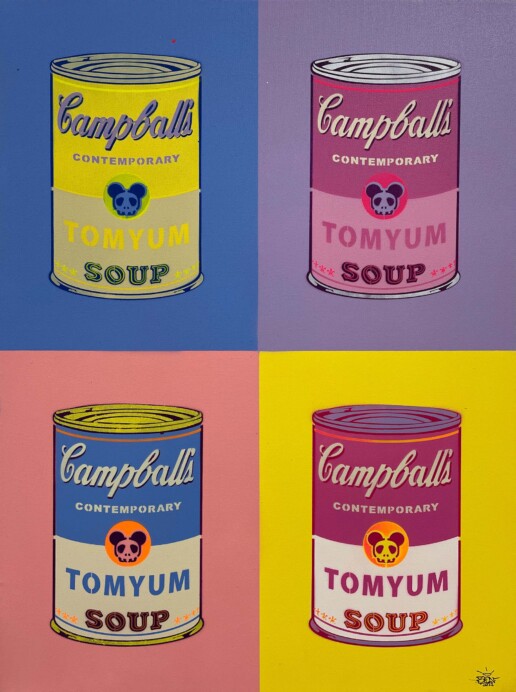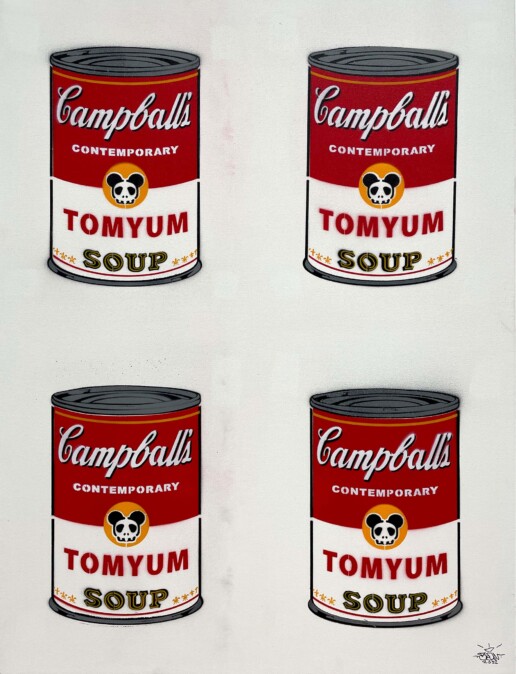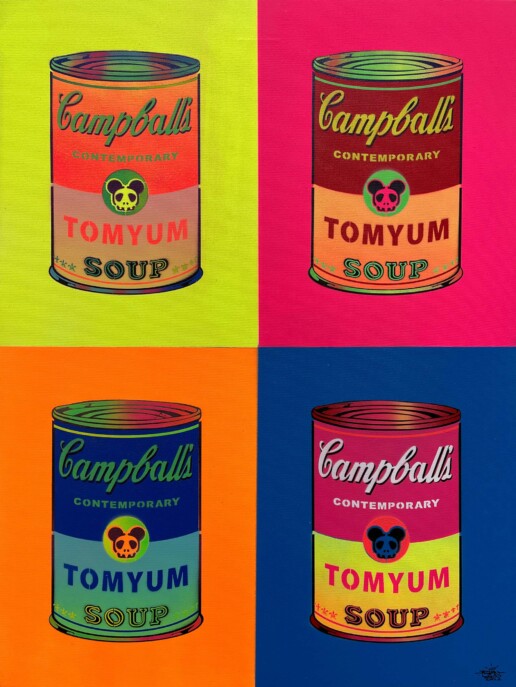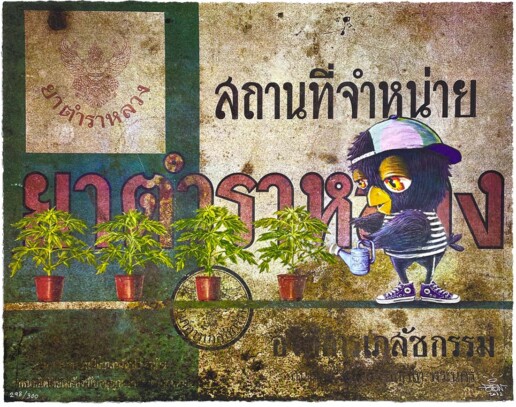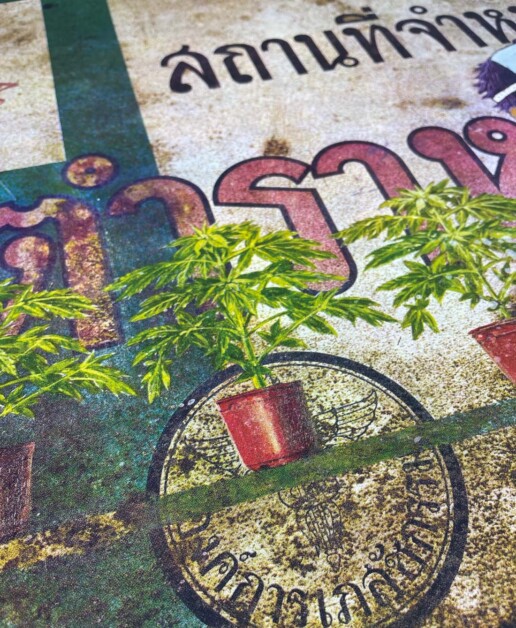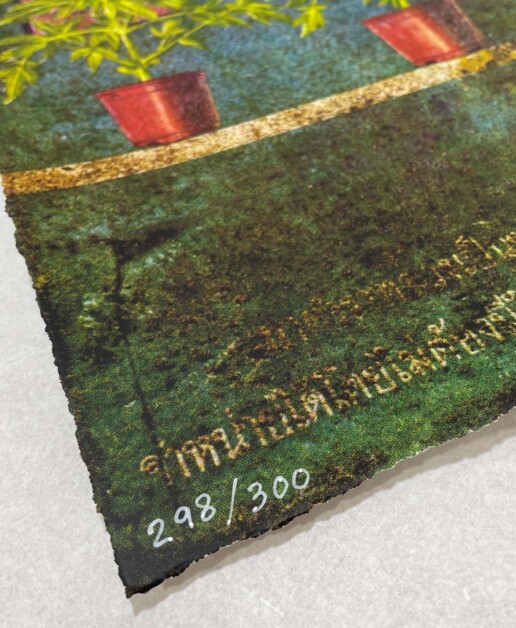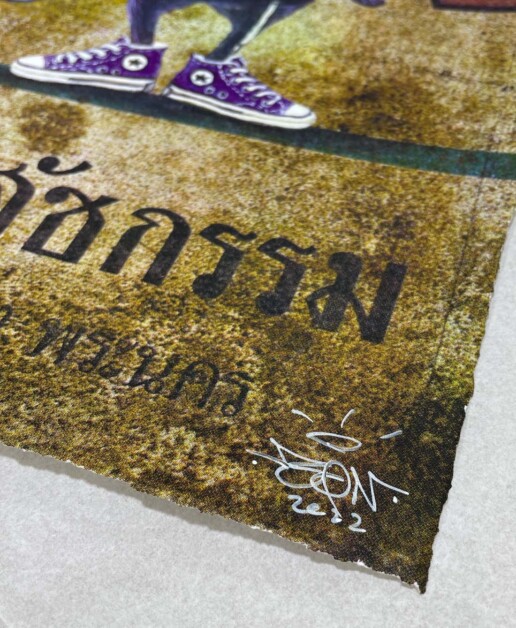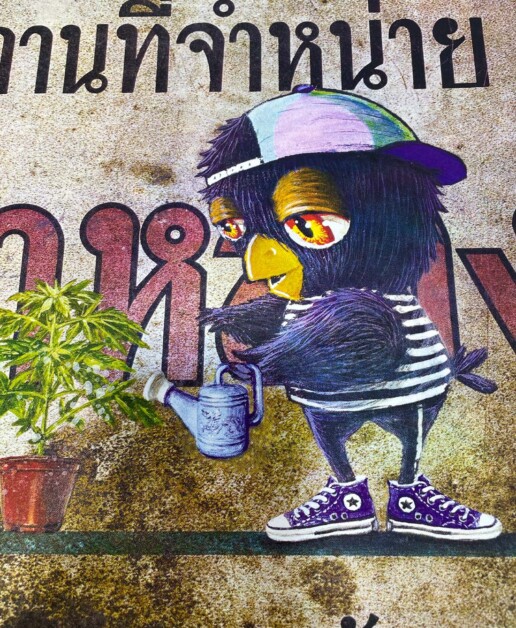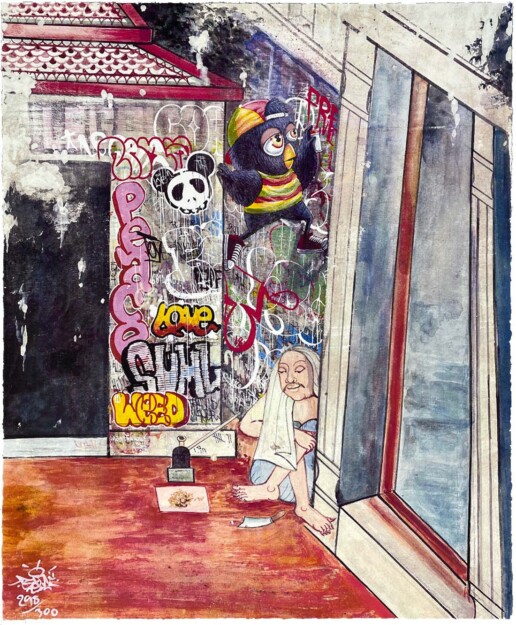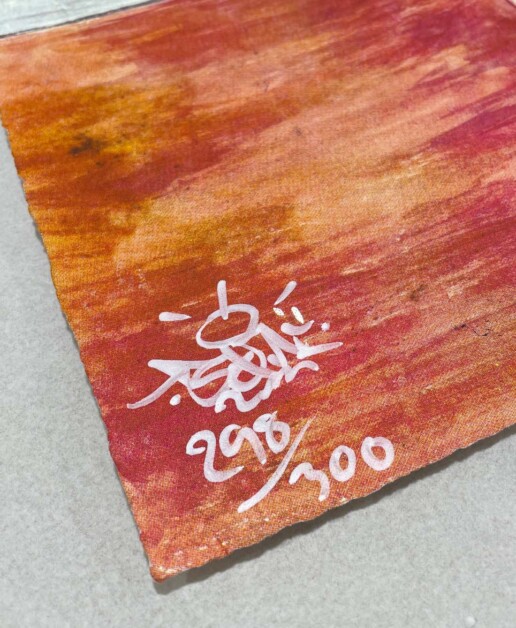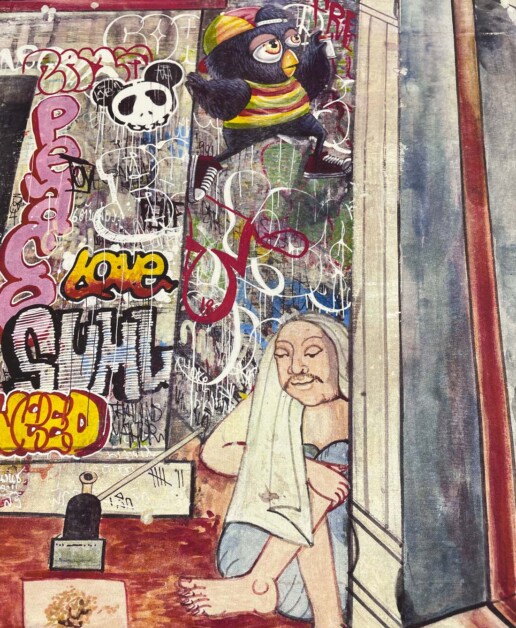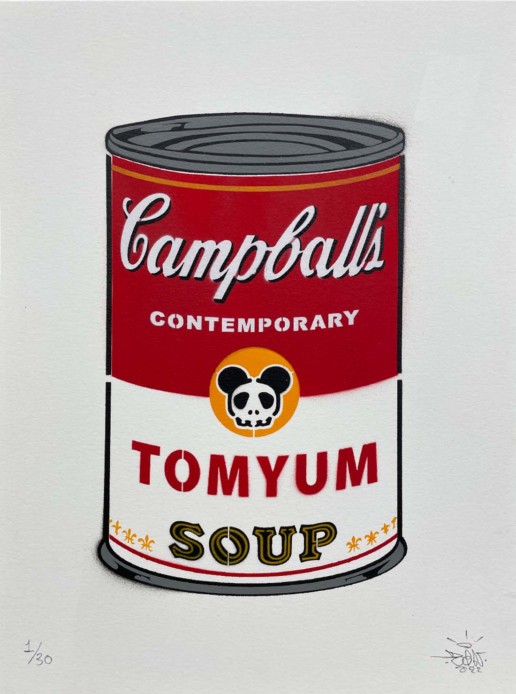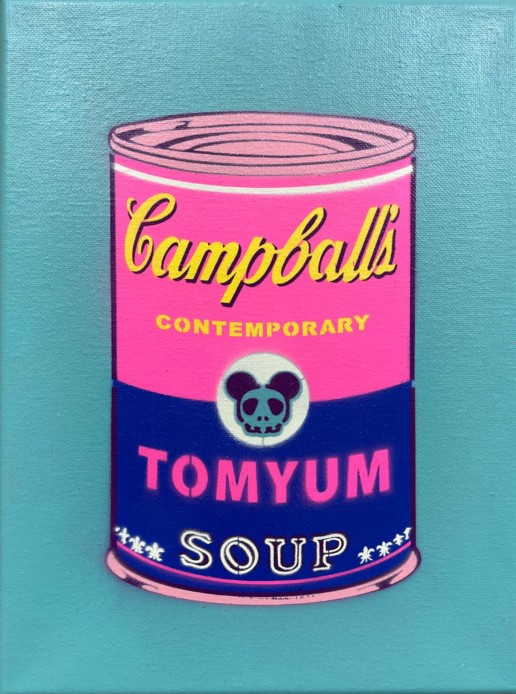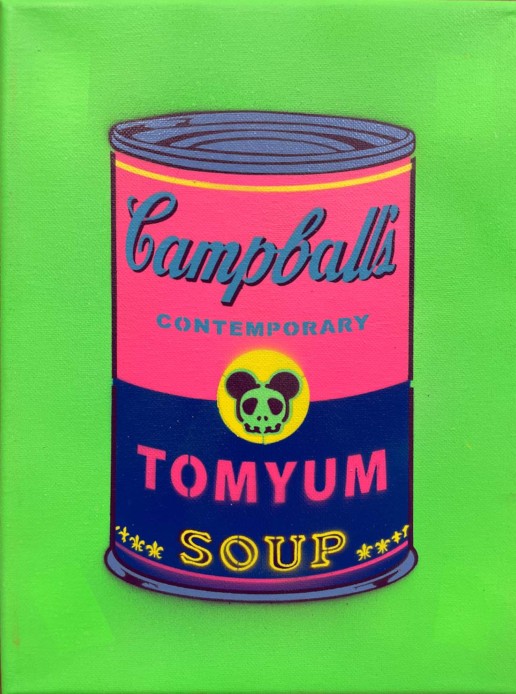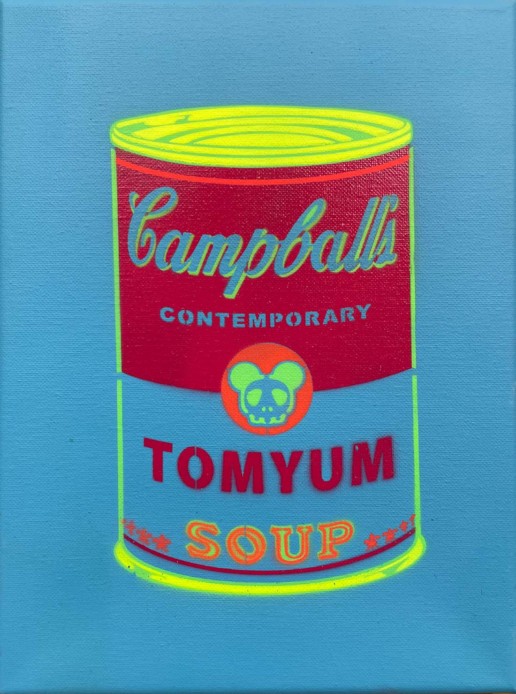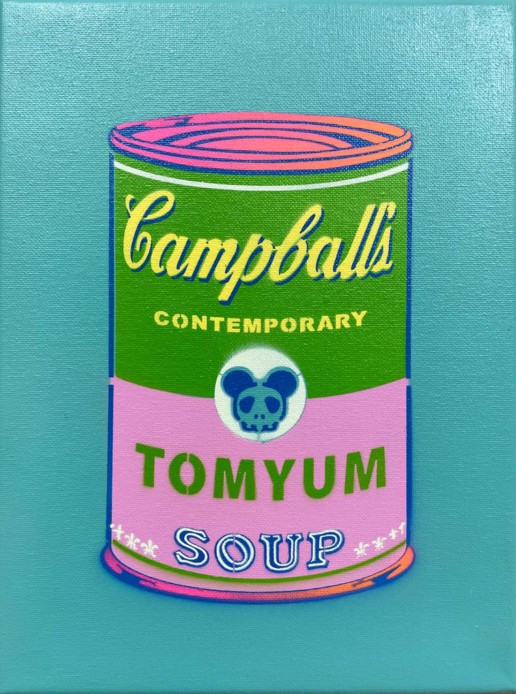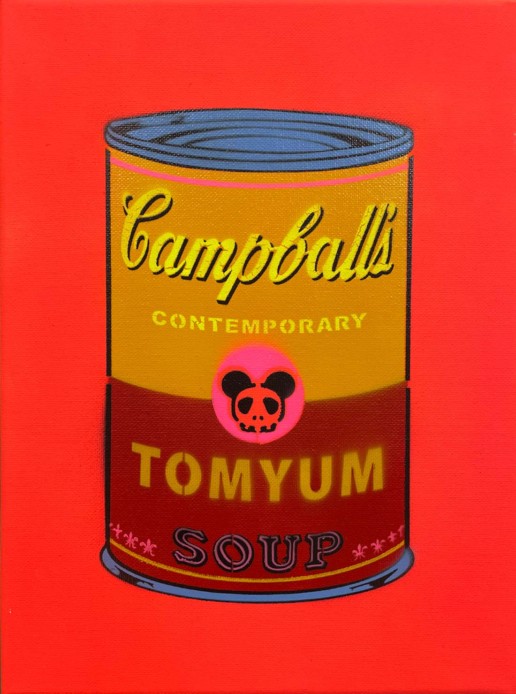MUEBON
THAILAND
MUEBON “WHAAM!”
September 10th – October 1st 2022
แบล็คบุ๊ค แกลเลอรี (Black Book Gallery)ยินดีนำเสนอ โปรเจค WHAAM! นิทรรศการเดี่ยวโดยศิลปินชาวกรุงเทพฯ MUEBON มือบอญ ( หรือ aka MUE-BON) ศิลปินแนวสตรีทมากฝีมือ ผู้ได้รับความสนใจเป็นครั้งแรกในช่วงต้นทศวรรษ 2000 ในลอนดอนภายใต้ชื่อ บอญ (BON). งานเปิดนิทรรศการจะมีขึ้นในวันเสาร์ที่ 10 กันยายน เวลา 19.00 – 22.00 น. และเปิดให้เข้าชมฟรี ศิลปินจะปรากฏตัวในงานและ (เป็นไปได้มากว่า) จะมีอาการเจ็ทแล็กอย่างยิ่ง นิทรรศการจะเปิดให้เข้าชมจนถึงวันที่ 1 ตุลาคม
ในภาษาไทย คำว่า มือบอญ MUE-BON เป็นคำอธิบายกึ่งดูถูก (semi-pejorative term) โดยพื้นฐานแล้วใช้อธิบายโรคสมาธิสั้น ตามที่ศิลปินเล่าไว้ มือบอญ หมายถึง “มือที่วุ่นวาย กระสับกระส่าย หรือมือที่อยู่ไม่สุข ขีดเขียนไปเรื่อยและก่อให้เกิดความยุ่งเหยิงอย่างต่อเนื่อง” อย่างไรก็ตาม คำว่า Bon ในภาษาฝรั่งเศส นั้นแปลว่า “ดี” ศิลปินมองว่าการแบ่งขั้วทางภาษานี้เป็นส่วนเสริมของความขัดแย้งระหว่างตะวันออกและตะวันตก ซึ่งแสดงออกถึงความแตกต่างกันของปรัชญาทางวัฒนธรรมและจิตวิญญาณในทั้งสองซีกโลก
ผลงานของมือบอญสะท้อนให้เห็นถึงความเครียดขึงของวัฒนธรรมนี้ ในรูปแบบที่ขี้เล่นและซุกซนบนบริบทที่หลากหลาย ตัวละครที่เป็นเอกลักษณ์ของเขาคือเจ้านกตาเบิกกว้างที่น่ารักอย่างเหลือเชื่อ ที่ร่ายเวทมนต์ต่อ เดนนิส เดอะเมนแนนซ์ ( Dennis the Menace ) และตัวละครเยาวรุ่นอื่น ๆ เจ้าตัวปัญหาผู้น่ารักเหล่านี้เป็นสัญลักษณ์ของความเป็นเด็กที่ซ่อนอยู่ภายในของสังคม เป็นการยกย่องความง่าย ๆ ซื่อ ๆ และความไร้เดียงสาที่มาพร้อมกับความเยาว์วัยที่ไม่มีวันตาย
ด้วยการผสมผสานเจ้านกที่เป็นเครื่องหมายการค้าของเขาเอง โดยได้แรงบันดาลใจจากสีสันของป๊อบอาร์ต ( Pop Art หรือศิลปะประชานิยม ) จากงานของ คีธ แฮริ่ง ( Keith Haring ) แอนดี้ วอร์ฮอล ( Andy Warhol ) และ รอย ลิคเทนสไตน ( Roy Lichtenstein ) ผลงานของมือบอญ ได้ตั้งคำถามต่อแนวคิดตะวันตกเกี่ยวกับคุณค่า มีมประวัติศาสตร์ศิลปะและการประพันธ์ในยุคของการจัดสรรวัฒนธรรม (cultural appropriation ) ในวัฒนธรรมร่วมสมัย สิ่งศักดิ์สิทธิ์และการดูหมิ่น มีส่วนร่วมในสงครามชักเย่อที่ไม่มีที่สิ้นสุด ซึ่งติดอยู่ระหว่างขั้วตรงข้ามของประชานิยมมวลชนและบุคลิกลักษณะที่ลึกลับ
ป๊อปอาร์ตยกระดับจินตภาพและสัญลักษณ์ของลัทธิบริโภคนิยม (mass consumerism ) และการโฆษณาจำนวนมากไปจนถึงจุดสูงสุดของวัฒนธรรมชั้นสูง (the pinnacle of high culture) โดยเปลี่ยนหนังสือการ์ตูนและของใช้ทั่วไปในบ้านให้กลายเป็นภาชนะยุคหลังสมัยใหม่ของการดำรงอยู่แบบเจนป๊อป ผลงานของมือบอญเป็นช่องทางของนักปรัชญาในขณะเดียวกันก็ตั้งคำถามถึงต้นกำเนิดของระบบความเชื่อแบบเดียวกันที่ยังคงกำหนดอุดมคติของตะวันออกและตะวันตก
มือบอญแต่งเรื่องราวของป๊อปสตาร์ชาวเอเชียที่เชื่อว่าเธอได้ค้นพบชุดผลงานต้นฉบับของวอร์ฮอลในร้านขายของเก่าเล็ก ๆ ในยุโรป ต่อมาเธอได้รับการเยี่ยมเยียนในฝันจากผีวอร์ฮอล ที่มายืนยันว่า งานศิลปะชิ้นนั้นเป็นของแท้ น่าเศร้าที่ทางสำนักงานศิลปะของวอร์ฮอลได้ประณามงานนี้ว่าเป็นของปลอมราคาถูก ซึ่งนักร้องเพลงป๊อปปฏิเสธที่จะเชื่อ เธอสร้างบูชาสถานให้แก่ปรมาจารย์ด้านศิลปะป๊อป ซึ่งวิญญาณของศิลปินที่เสียชีวิตเหล่านี้ถูกปลุกให้ขึ้นมาปกป้องมรดกของพวกเขาและรับรองว่างานของพวกเขาจะไม่สูญหายไปจากการแสดงที่ไม่ถูกต้อง ( misattribution )
สำหรับมือบอญ เรื่องที่เล่ามานี้ (มาจากข่าวจริงเกี่ยวกับป๊อปสตาร์ตัวจริงที่เชื่ออย่างผิด ๆ ว่าเธอได้ค้นพบงานของแวนโกห์จริง ๆ) แสดงถึงพลังแห่งศรัทธาที่ไม่เปลี่ยนแปลงและอาจทำให้มองไม่เห็น ไม่ว่าจะปรากฏในความฝันในสมัยโบราณ ข้อความทางศาสนาที่สืบทอดกันมานับพันปี หรือแหล่งนิทานพื้นบ้านอื่น ๆ
ในวันนี้ ด้วยการแพร่กระจายของข่าวปลอม ( misattribution ) และภัยจากสื่อลามก ( Disaster porn ) สงครามจิตวิทยา( psychological warfare ) การโฆษณาชวนเชื่อที่เกิดขึ้นทางออนไลน์ ( propaganda spawned online ) และแพร่กระจายไปทั่วโลกผ่านโซเชียลมีเดีย การพยายามแยกความเป็นจริงออกจากนิยายเป็นเกมฝั่งที่พ่ายแพ้มากขึ้น เมื่อศรัทธาเข้ามาแทนที่ความจริง ที่เป็นแก่นของความสัตย์จริง ผลกระทบของมันจะสั่นสะเทือนไปทั่วสังคม คุกคามการทำลายตนเองของมวลชนเหมือนกับผู้นำลัทธิที่เรียกร้องให้ผู้ติดตามของพวกเขาดื่มคูลเอด “เพื่อประโยชน์ของพวกเขาเอง”
งานของมือบอญท้าทายประเพณีนี้โดยการปลดอาวุธพวกมันด้วยกองทัพนกผู้คัดค้านทางปรัชญา ( philosophical dissidents ) ที่น่ารักของเขา บูชาที่แท่นบูชาของป๊อบอาร์ต นกของมือบอญเฉลิมฉลองและบ่อนทำลายเทพเจ้าแห่งประวัติศาสตร์ศิลปะ งานของเขาแสดงความเคารพต่อผู้นับถือลัทธิเหล่านี้ เป็นเครื่องบรรณาการที่อุทิศให้แต่ไม่สัมพันธ์กัน และการรวมตัวกันของตะวันออกและตะวันตก ศักดิ์สิทธิ์และหยาบคาย สื่อถึงความเป็นคู่โดยกำเนิดของสิ่งมีชีวิตน้อยใหญ่ทั้งหมดทั้งมวล
มือบอญเกิดในประเทศไทยและเติบโตในสลัมที่ฝั่งธนบุรี เขาศึกษาศิลปะที่สถาบันเทคโนโลยีราชมงคลและจบการศึกษาด้วยเกียรตินิยมในปี 2005 ต้นกำเนิดศิลปะบนท้องถนนของเขาเป็นข้อพิสูจน์เกี่ยวกับความเสมอภาคของสังคมต่อวัยเด็กอันยากลำบากของเขา ที่เต็มไปด้วยภาระจากความยากจนและการเข้าถึงงานวิจิตรศิลป์ได้เพียงน้อยนิด เขาได้ทำงานร่วมกับแบรนด์หรูอย่าง Hermes ตั้งแต่นั้นและจัดแสดงทั่วโลกตั้งแต่แคลิฟอร์เนีย มอสโก ไปจนถึงโตเกียวหากต้องการรับชมตัวอย่างผลงาน โปรดติดต่อแบล็คบุ๊คแกลลี่
Black Book Gallery is pleased to present WHAAM!, the first U.S solo exhibition by Bangkok-based artist MUEBON, a prolific street artist who first gained attention in the early 2000s under the moniker BON. The opening reception will take place on Saturday, September 10th from 7pm – 10pm and is free and open to the public. The artist will be present, the exhibition will remain on view until October 1st.
In Thai, the word Muebon is a semi-pejorative term used to describe, essentially, attention deficit disorder. According to the artist, MUEBON means “restless hands or hands that are constantly fiddling, scribbling, and causing a mess.” Bon, however, means “good” in French. The artist sees this linguistic dichotomy as an extension of the friction between East and West—which manifests in the two hemispheres’ divergent cultural and spiritual philosophies.
MUEBON’s work reflects this cultural tension—in playful and mischievous variations on the theme. His signature characters are impossibly cute, wide-eyed birds that conjure Dennis the Menace and other pre-teen personas. These adorable troublemakers symbolize society’s collective inner child, a tribute to the naivete and innocence that accompanies enduring youth.
By integrating his own trademarked birds with references to the colorful specters of Pop Art—Keith Haring, Andy Warhol, and Roy Lichtenstein — MUEBON’s work interrogates Western concepts of value, art historical memes, and authorship in the era of cultural appropriation. In contemporary culture, the sacred and profane are engaged in an endless tug-of-war, caught between the opposing poles of mass populism and esoteric individuality.
Pop Art elevated the imagery and symbolism of mass consumerism and advertising to the pinnacle of high culture, turning comic strips and ordinary household products into post-modern vessels of gen-pop existentialism. MUEBON’s work channels this zeitgeist, while questioning the origins of those same belief systems that continue to dictate Eastern and Western ideals.
MUEBON recounts the story of an Asian pop star, who believed she had uncovered a suite of original Warhol works in a tiny European antique shop. She was later visited in a dream by the ghost of Warhol, who confirmed that the artworks were authentic. Sadly, Warhol’s estate subsequently condemned the works as cheap knock-offs, which the pop star simply refused to believe. She then built a shrine to the masters of Pop Art, where the spirits of these dead artists were invoked to protect their legacies and ensure their works were not lost to misattribution.
To MUEBON, this story (derived from an actual news story about an actual pop star who believed, falsely, she had found an actual Van Gough) represents the unwavering—and potentially blinding—power of faith, whether manifested in a dream, an archaic religious text passed down for millenia, or other sources of folklore.
Today, with the viral dissemination of fake news and disaster porn, psychological warfare and propaganda spawned online and spread globally through social media—attempting to separate reality from fiction is an increasingly losing game. When faith replaces fact as the prevailing basis for truth, the effects reverberate across society, threatening mass self-destruction—like a cult leader demanding that their followers drink the kool-aid “for their own good.”
MUEBON’s work challenges this tradition, disarming it with his cute-bird-army of philosophical dissidents. Worshiping at the altar of Pop Art, Muebon’s birds both celebrate and undermine the gods of art history. His work pays homage to these iconoclasts—a tribute that’s devotional yet irreverent—and the union of East and West, sacred and profane, channeling the duality inherent to all living creatures, both great and small.
MUEBON was born in Thailand and grew up in the slums of Thonburi. He studied art at the Rajamangala Institute of Technology and graduated with honors in 2005. His street art origins are a democratic testament to his difficult childhood, burdened by poverty with little access to the fine arts. He has since collaborated with luxury brands such as Hermes and exhibited worldwide from California to Moscow to Tokyo. To preview available works, please contact the gallery.
We accept credit card, bank transfer & PayPal
Additional photos available upon request
Payment plans available
Contact us with any questions – info@blackbookgallery.com / 303-941-2458
MUEBON
Debo Street 104 (Blue)
Media: Acrylic, gouache and spray paint on linen
Size: 39 x 27 Inches / 100 x 70 Centimeters
Year: 2022
Availability: Inquire
MUEBON
Tomyum (White)
Media: Spray paint on canvas
Size: 18 x 24 Inches / 45.7 x 61 Centimeters
UNIQUE
Year: 2022
Availability: Inquire
MUEBON
Panacea.2022
Media: 4-color hand-pulled screen print on Superfine Eggshell White 270gsm – Deckled Edges
Size: 15.7 x 20.2 Inches / 40 x 51.5 Centimeters
Edition: 300 – Signed & Numbered
Only 10 available!
Year: 2022
CLICK HERE TO PURCHASE
MUEBON
Outlaw Man.(Sketch 1)
Media: 4-color hand-pulled screen print on Superfine Eggshell White 270gsm – Deckled Edges
Size: 15.7 x 19.3 Inches / 40 x 49.2 Centimeters
Edition: 300 – Signed & Numbered
Only 10 available!
Year: 2022
CLICK HERE TO PURCHASE
MUEBON
Tomyum (Paper)
Media: Spray paint on paper
Size: 9 x 12 Inches / 22.8 x 30.5 Centimeters
Edition: 30 – Signed & Numbered
Year: 2022
CLICK HERE TO PURCHASE
MUEBON
Tomyum (Canvas)
Media: Spray paint on canvas
Signed – Each unique
Size: 9 x 12 Inches / 22.8 x 30.5 Centimeters
Year: 2022
CLICK HERE TO PURCHASE

